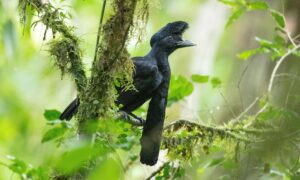
When it came to dividing up his late father’s farm between five brothers, Vinicio Bacuilima says he drew the short straw. Maraksacha, on the main road out of Ecuador’s capital Quito, is a tiny patch of land on the edge of a steep ravine, making it very difficult to make a living from farming.
Then Bacuilima’s wife Anita Cajas had an idea: turn their paltry inheritance into a site to attract visiting birders. Creating the Maraksacha Reserve was a risky venture, but it paid off, with feeders attracting a host of colourful hummingbirds and tanagers.
“Because we’re on the main road from Quito to Mindo, we get lots of visitors – especially bird photographers,” Cajas says. They “enjoy sitting on our terrace, drinking coffee, and getting such closeup views of the birds”.
Birding tourism is thriving in Ecuador, with increasing numbers of specialist tour groups, local bird guides and wildlife lodges. The country boasts more than 1,600 different species – almost twice as many as the whole of Europe – in an area only slightly larger than the UK. As the business of birding grows, more and more subsistence farmers are transitioning their land from agriculture to bird reserves, benefiting not just the birds, but the country’s economy too.
Angie Drake, a sustainable tourism consultant in the US, says by improving biodiversity and reaching out to wildlife tourists, some farmers have expanded their land’s potential far beyond the traditional farming model.
“They are finding ways to balance profitability with environmental stewardship,” she says. “This innovative approach offers a blueprint for other farmers wanting to reconsider their relationship with the land.”
One family, the Avilas, have devoted their lives to saving one of South America’s most bizarre species: the long-wattled umbrellabird. This black, crow-like species sports a teddy boy’s quiff and what looks like a long, woollen scarf hanging down from its throat. On his land near Recinto 23 de Junio, landowner Luis Avila has switched from dairy farming to conservation, replanting trees and promoting the site to wildlife tourists – work that he says is a better livelihood than farming.
